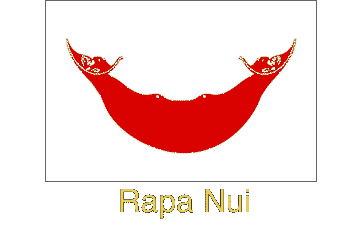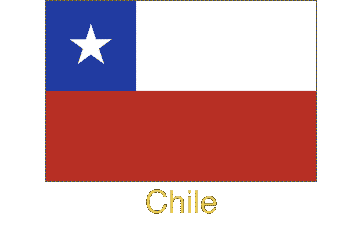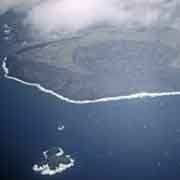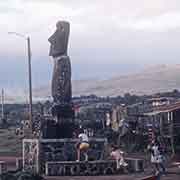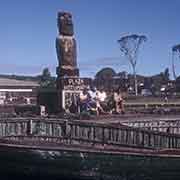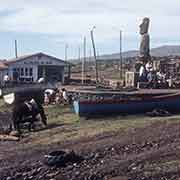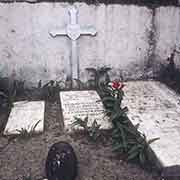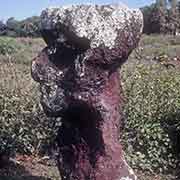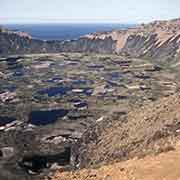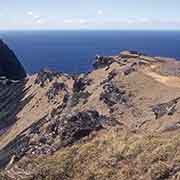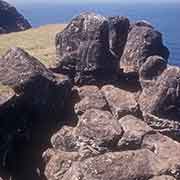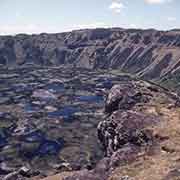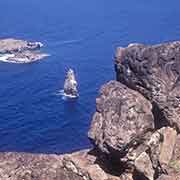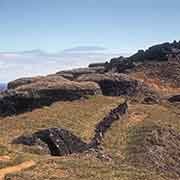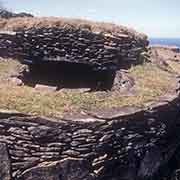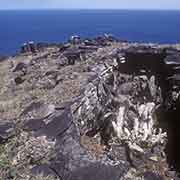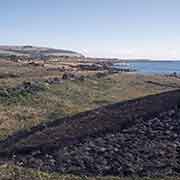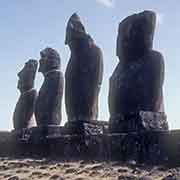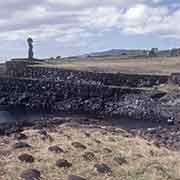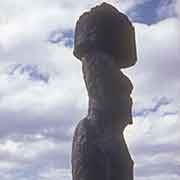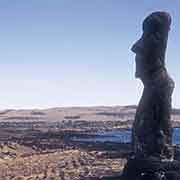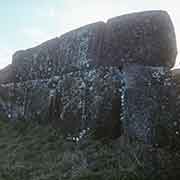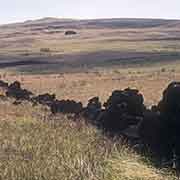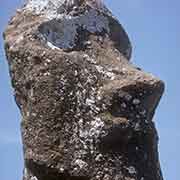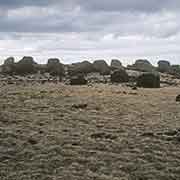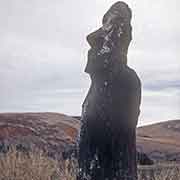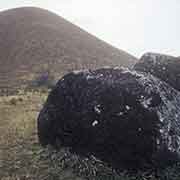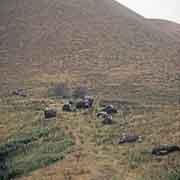Photos of Hanga Roa and the southwest of Rapa Nui
Hanga Roa and the southwest of Rapa Nui
Hanga Roa is the only town on the island and grew from the Catholic mission, established in 1866 by Brother Eugène Eyraud, a lay friar of the Congregation of the Sacred Hearts of Jesus and Mary, whose grave is next to the church. It is in the southern part of the island’s west coast and has a harbour; “Hanga Roa” in the Rapanui language means “wide bay”. Chile annexed Rapa Nui in 1888 and fifteen years later leased the whole island for fifty years to the Williamson-Balfour Company, to be used as a sheep farm. The native Rapanui people during the lease were fenced in and confined to Hanga Roa. It now functions as the capital and has several hotels and guesthouses, catering to tourists arriving at Mataveri International Airport.
you may then send it as a postcard if you wish.
South of Hanga Roa, on the southwestern tip of Rapa Nui, is the massive volcanic caldera named Rano Kau. On its rim is Orongo, a ceremonial village, a collection of low, sod-covered, windowless, round-walled stone buildings with even lower doors, overlooking the islets of Motu Ka-Kao, Motu Iti and Motu Nui. Motu Nui (“big island”) is the island from where an egg had to be procured by competitors during the annual “Birdman” competitions that took place for about a hundred years until the tragic events of the 1860s. Just north of Hanga Roa is Tahai, an ancient Easter Island village and ceremonial complex with three ahu (stone platforms). These were restored in 1974 by the late Dr William Mulloy, an American archaeologist. He, with his wife, is also buried in Tahai. The Ahu Vai Ure has five “moai” statues, some broken when they were toppled, while one, at Ahu Ko Te Riku, wears its “pukao”, a red scoria top knot (headgear).
Near Hanga Roa, on the south-east coast of Rapa Nui, is Ahu Vinapu, a ceremonial centre, one of the larger ahu, with extraordinary stonemasonry, consisting of large, carefully fitted slabs of basalt. A few kilometres north of this Puna Pau, the quarry where “pukao”, the hat-like structures or topknots, that were placed on top of some moai statues, were carved from the very light-red volcanic scoria found here. North of there is Ahu Akivi, a particularly sacred place, inland, rather than along the coast. The site has seven moai, all of similar shape and size; it is also known as a celestial observatory dating from around the 16th century. A particular feature of the seven identical moai statues is that they exactly face sunset during the Spring Equinox and have their backs to the sunrise during the Autumn Equinox. Such an astronomically precise feature is seen only at this location on the island.
